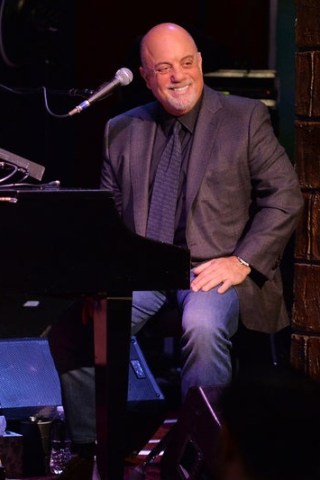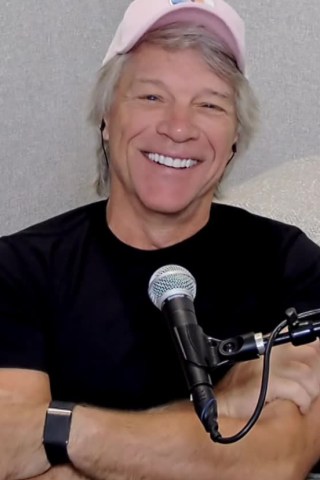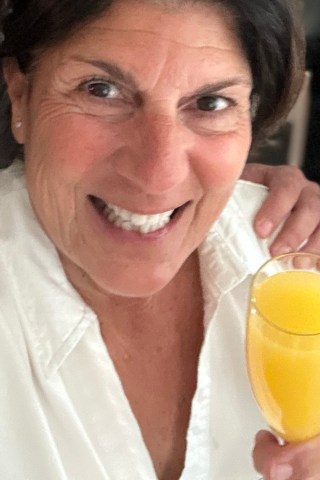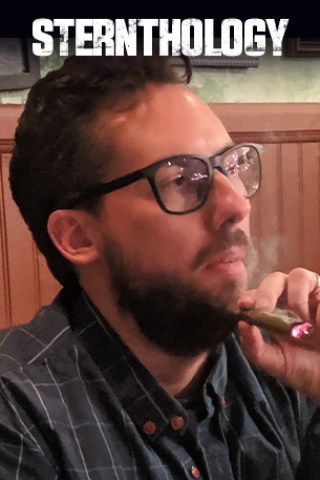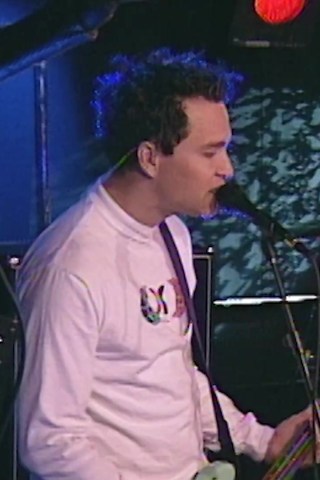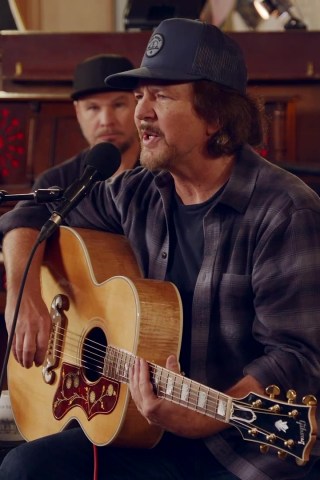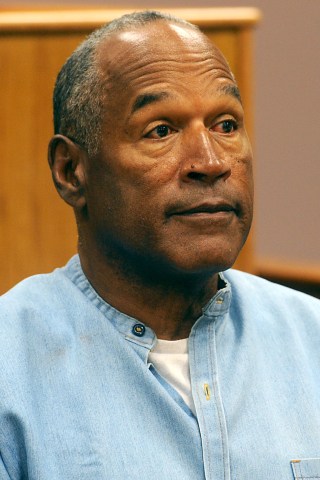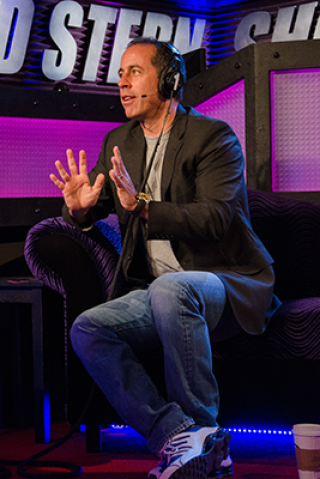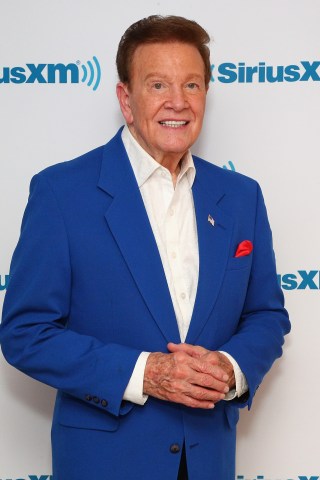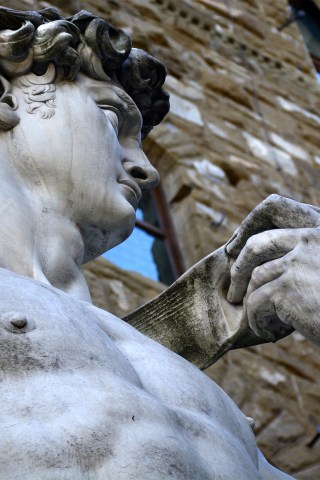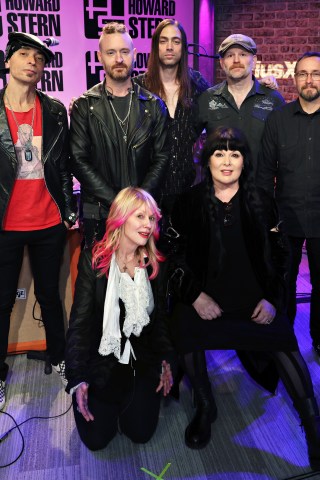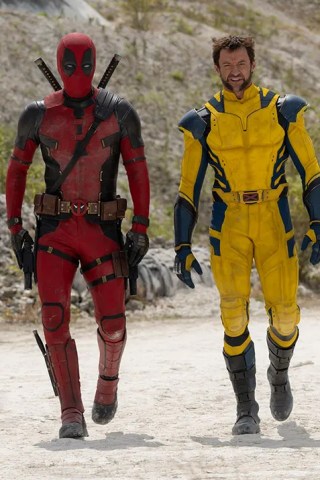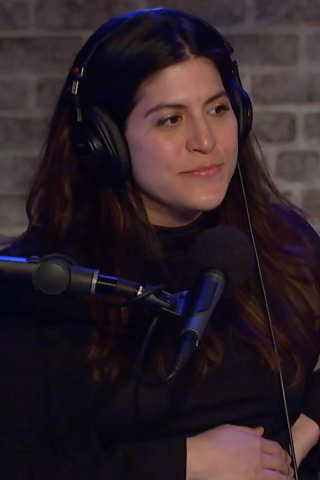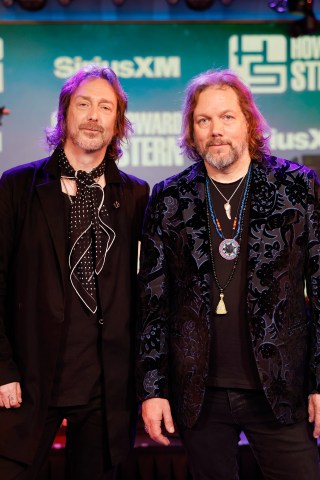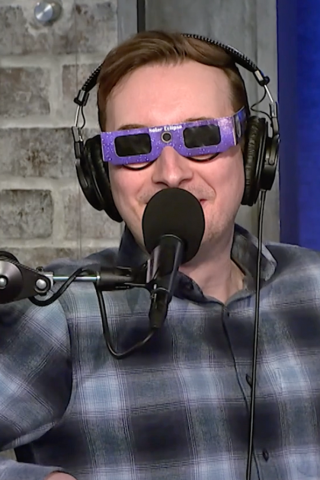Paul Simon Talks Losing His Hearing, Finding His Wife, and Breaking Up With Art Garfunkel
American music icon makes his Stern Show debut following the release of “Seven Psalms”
September 22, 2023Paul Simon has won 16 Grammys, helped sell over 125 million records, and earned two separate inductions into the Rock and Roll Hall of Fame, but when the timeless troubadour made his Stern Show debut Wednesday morning he seemed far less concerned with sales figures and industry accolades than with how his diverse catalog of genre-bending music has been shaped by those who enjoy it.
“One of the tenets I have of songwriting is this: the listener completes the song. You sing whatever lyric you know, and that’s what the song is. And very often people sing the lyric, and they have words that are different,” he told Howard. “Rarely, but sometimes, they have a better understanding of what the song is than [I did] when I wrote it. It’s valid. It’s pleasurable to me as a writer to have this other revelation come to me from what the person hears.”
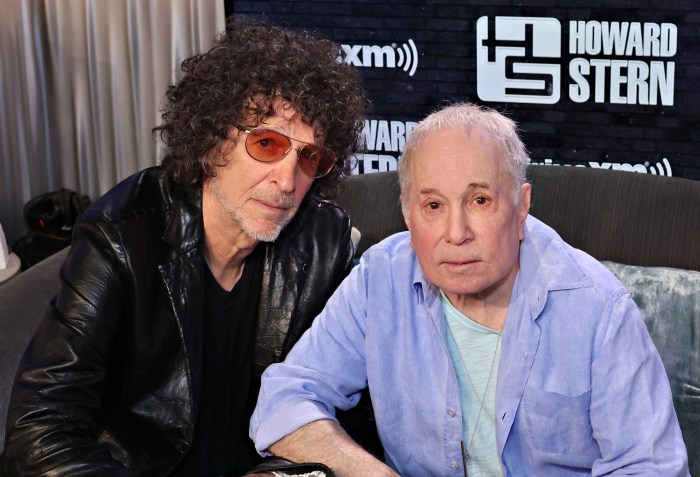
Simon spoke candidly on subjects ranging from losing his hearing and drifting apart from Art Garfunkel to how Lorne Michaels helped him meet musician Edie Brickell, his wife of over 30 years. But when it came to discussing the meaning behind classics like Simon & Garfunkel’s “Bridge Over Troubled Water” and his solo effort “Graceland,” the 81-year-old singer-songwriter was reluctant to overshare. As he saw it, discussing the intended meaning behind any work of art only cheapens its impact.
“What I meant is what you hear,” he said, adding. “You can attempt to [explain] it with words, but you never get it right.”
It’s not just fans who can reshape a song, either. “The Sound of Silence” eventually became one of Simon & Garfunkel’s most ubiquitous hits, but Simon told Howard its reception was lukewarm in 1965 following the initial release. He credited famed Bob Dylan producer Tom Wilson, who remixed the track, overdubbing the acoustic instrumentation with electric guitar and drums, with helping it find broader success.
Howard wondered if, when Paul was writing the song, he suspected it would become a career-defining hit.
“No, I didn’t,” Paul responded, adding, “I said [to myself], ‘This is better than I usually do. This is the best one I’ve written so far.’”
As Paul picked up an acoustic guitar and started performing “The Sound of Silence” live on the Stern Show, he told Howard “The Sound of Silence” continues to evolve to this day. “Somehow that song has changed its meaning over the years. It’s different. That’s good luck for me that that happened, you know?” he said. “Most of what you wrote 30 or 40 years ago is dated — that song has something else.”
Proving that he really was open to reinterpretations of his most cherished songs, Paul then praised the heavy metal band Disturbed’s 2015 cover of the track. “I liked it very much … It was accomplished very well,” Paul said, explaining he was so impressed he called Disturbed singer David Draiman and told him how much he enjoyed it.
‘American Bandstand,’ Jerry Lee Lewis, and ‘The Thing About Dick’

Simon & Garfunkel were still going by the name of Tom & Jerry in 1957 when they performed “Hey, Schoolgirl” on Dick Clark’s hugely popular TV show “American Bandstand.”
“It was a teenage dream,” Paul said of the opportunity. He told Howard the duo was thrilled just to visit Philadelphia let alone get a taste of fame and the chance to meet stars like Clark and Jerry Lee Lewis, who was also taping there that day. “I looked at Jerry Lee Lewis and I thought, ‘This guy is really scary, and he is not from my neighborhood,’” Simon recalled with a laugh.
For some musicians who performed on Clark’s show, the teenage dream eventually became a nightmare. That’s because Clark demanded kickbacks from his musical guests in exchange for the exposure they got from performing in front of an audience of millions. In some cases, the TV host and producer even wound up with a share of an artist’s publishing rights.
While Paul described Dick as “a nice guy,” he said the TV host did in fact pocket the money Paul and Art were supposed to earn for their “Bandstand” appearance. “The union scale was like $221 … [and] the idea that we were gonna get paid $221 a piece—we were thrilled,” Paul said. “[But] you had to sign the check over to [Dick]. You endorsed the check, and he kept it.”
The Time He Stood Next to Jimi Hendrix’s Fire

The 1967 Monterey Pop Festival, featuring acts like Otis Redding, the Who, Janis Joplin, and Simon & Garfunkel, has been regarded as one of the most seminal concerts in rock ‘n’ roll history. On Wednesday, Paul told Howard it was also where he first met guitar virtuoso Jimi Hendrix.
“We jammed together,” Simon said with a laugh. “If you can call me trying to keep up with him jamming … He was an extraordinarily gifted guitarist.”
As it turned out, Hendrix didn’t just play guitar at the Monterey Pop Festival. He also set one on fire.
“I thought it was an incredible act of showmanship,” Paul recalled, explaining he enjoyed watching Jimi light his guitar on fire far more than seeing the Who’s Pete Townshend smash his guitar into an amp. “I didn’t get the same pleasure out of that act of nihilism,” he added.
The Monterey Pop Festival was a coming out party for several acts which eventually went on to become rock ‘n’ roll legends, but Simon recalled one San Francisco band getting kind of a raw deal: The Grateful Dead. “Unfortunately for the Grateful Dead, they were sandwiched between Jimi and the Who,” he said with a laugh. “This was gonna be them entering a national stage, but … then they seemed uninteresting by comparison.”
How a Catch-22 With Art Garfunkel Led to Paul Going Solo

After a career together dating back to when they were just teenagers, Simon & Garfunkel infamously called it quits in 1970. Though the split happened around the time of Art Garfunkel’s budding movie career, Paul was quick to jump to his former partner’s defense. “It wasn’t Artie’s fault,” he insisted to Howard before revealing that while both of them were supposed to be in director Mike Nichols’ film “Catch-22,” his part was cut from the script.
Garfunkel had Simon’s full support. So much so that Paul even penned “The Only Living Boy in New York” about Art’s journey down to Mexico to shoot the film. But at the same time the rigorous shooting schedule interfered with the group’s momentum. “We were in the midst of making ‘Bridge Over Troubled Water’ and this was interrupting, and Simon & Garfunkel were at their peak,” Paul told Howard. “From ‘The Graduate’ to ‘Bridge Over Troubled Water,’ we were probably as big as the Beatles.”
According to Simon, the trouble went beyond film. “What was going on in the studio though was a real tug of war about taste and how to do it,” he explained. “We were friends since we were 12 years old, but our musical inclinations are quite different, and so we would have disagreements, and the disagreements could be, you know, real arguments that could stop a session cold.”
The nail in the coffin, at least for the time being, was when Paul heard through mutual friend Charles Grodin that Art was going to be in Nichols’ next film, “Carnal Knowledge.” “‘I was afraid if I told you, you would stop working on ‘Bridge Over Troubled Water,’” Paul recalled his partner saying. “And I thought, ‘I’ve got to get out of here.’”
With encouragement from then-wife Peggy Harper, Paul went solo. Clive Davis, then the president of their label, Columbia Records, disagreed. “’That’s the biggest mistake of your life,’” Paul remembered of the conversation with the executive.
Still, Simon believes the end of the partnership was inevitable. “We would’ve broken up anyway. Duos don’t stay together,” he insisted before citing examples like John Lennon and Paul McCartney of the Beatles and the Everly Brothers. “And when they get back together, it’s not about the music, it’s about the business.”
The Incident at the Concert in Central Park

Simon & Garfunkel famously reunited in 1981 to perform in front of 500,000 fans in Central Park. Not only did the epic benefit concert yield a TV special and the duo’s first live album, it also marked the start of a three-year reunion for Paul and Art. Though the concert is celebrated as one of the duo’s very best live performances, it didn’t go off without a hitch. Paul was accosted on stage while performing “The Late Great Johnny Ace,” a song he’d penned after the death of Beatles legend John Lennon, who’d been assassinated in New York City just a few months earlier.
The man thankfully didn’t harm Paul — he yelled “we need to talk!” as security whisked him away — but over 40 years later the incident still sticks in Simon’s mind. “It was happening very fast,” he told Howard. “I could see him out of the corner of my eye get onto the stage and walking toward me. I was thinking ‘Is this guy dangerous? What’s going on with this guy and how did he get on the stage?’”
Howard wondered why Art didn’t jump in to protect his other half.
“Artie wasn’t a guy that was about to throw his fists at anyone,” Paul laughed.
He also revealed that while John scored a tribute song, he wasn’t necessarily Simon’s favorite Beatle. “George [Harrison] was the most interesting of the group. John I only knew briefly, and then he was gone,” he said.
On Meeting Future Wife Edie Brickell at ‘Saturday Night Live’
A member of the Five-Timers Club for hosting, Paul has had many memorable appearances on “Saturday Night Live.” But perhaps his most important time at the long-running variety was when he came to check out that evening’s musical guest: Edie Brickell & New Bohemians.
Edie and Paul would go on to get married in 1992, but that was the furthest thing from the artist’s mind when he spoke to her at the afterparty that night. “I wasn’t thinking anything,” he told Howard of the possibility of romance. “I was thinking, ‘I like the way she sings, I love the way she looks, [and] I’m happy enough to be here.’ I’m not thinking, ‘Hey, maybe I’ll marry this girl.’”
A hurdle for a potential relationship was when they discovered that evening their nearly 25-year age difference. “There was kind of a silence between the two of us,” Paul remembered with a laugh.
They met again soon after when Brickell did two sets at legendary New York club the Bottom Line. “After the first show, I went backstage to her dressing room, but it was packed with record company people,” Paul said of why he initially left after a quick hello. “I was driving away, and I thought, ‘Why am I driving away? I came down here to see her.’”
The pair wound up going to a dinner at a Japanese restaurant before Edie’s second set began and things progressed quickly enough that he visited her soon after in Texas. For Simon, it was a fish out of water experience. “It was hilarious … she had this 1972 mustard yellow pickup truck … I said, ‘That’s your car?’” he remembered. “I’m from New York. I really was not into the world of pickups.”
‘The Inspiration Behind ‘Seven Psalms’
Paul brandished his guitar and regaled Howard and Robin several times throughout the course of the interview, including while discussing his new album “Seven Psalms,” a seven-part acoustic piece meant to be listened to in its entirety. He said the idea for the record — his 15th studio effort — came to him in a dream so potent he woke up and immediately began to write.
Howard was deeply moved by one piece in particular, “Love Is Like a Braid.” Paul told him the song was written in part about losing hearing in his left ear, which he first went public about when the album hit shelves in May.
“It was gradual, but then I had a procedure which was supposed to improve it but in fact took all the hearing away,” he told Howard.
Still Playing After All These Years
Though he’s not known for shredding, Paul is still a celebrated guitarist. He picked the instrument at around 13 when his father, a professional musician, showed him how to play the doowop staple “Earth Angel.” “He taught me those chords and they fit, oh, maybe 90 percent of the songs that I first heard,” the singer-songwriter recalled as he held the instrument in his hands.
Starting out with a traditional flat pick, Simon eventually graduated to the fingerstyle he’s known for to this day. “It’s called Travis picking, and it’s named after Merle Travis, the great country guy,” he explained to Howard while giving a demonstration. “What’s going on with this kind of picking is the thumb is always moving.”
Currently, Simon doesn’t use a pick at all. “Now, I only use my nails,” he revealed, adding, “But I put an acrylic on my nails so that they’re very hard.”
He might be several decades into playing, but in some ways Simon is still the student. “I am a good guitar player, but the guitar is like a universe – you can never come to the end of what you can learn from it,” he said before explaining why he “fools around” on the instrument every day. “If I don’t play, I’m uncomfortable.”
A Hazy Shade of Drug-Induced Self Doubt
While it’s not something he does anymore, Simon told Howard he had smoked marijuana and dabbled with psychedelics like ayahuasca in the past to see how they affected his songwriting. “Sometimes [you] make very interesting connections between things you wouldn’t ordinarily connect — and that helped me quite a lot,” he told Howard, explaining his 2000 album “You’re the One” is the work most influenced by drug use.
However, Paul was quick to note drugs weren’t the secret to becoming a good artist. “My feeling about it … was I would’ve gotten the same information anyway as time passed,” he said, adding, “The pot was a big waste of time because it fed you a lot of misinformation. Either it said, ‘That was incredible,’ or it said, ‘God, you’re terrible.’”
“I used to get negative thoughts if I smoked a little bit before I wrote,” he continued before sharing one drug-fueled anecdote: “I was going to play and the voice in my head said … ‘You’re really not that good.’ And I said out loud … ‘You’re right, I agree with you. I’m not that good. I have a question for you: Who the fuck are you? What did you write?’ ‘Oh, nothing.’ ‘Oh, okay. Well, see ya. I gotta go to work.’”
Paul’s Reasons to Believe We’ll All Be Received in Graceland
Paul has written hundreds of songs over the course of his storied career. While most came from somewhere within, he told Howard a few of his most celebrated tracks originated somewhere far more mysterious.
“There is something where you feel as if the music is coming through you. You’re a part of it, but it’s not starting with you — it’s coming from somewhere,” he told Howard, naming “The Sound of Silence,” “Bridge Over Troubled Water,” and “Graceland” as three examples.
Howard was curious to explore Paul’s spiritual side. “Is there a God? Because I need to know,” he said.
“This is my feeling about God or a creator: The planet that I’m living on is so beautiful and the universe is so awe inspiring, if that is the work of a creator, I say ‘Thanks so much … I really dig what you’re doing,” Simon responded. “If it turns out there’s another explanation for creation, I’m still unbelievably grateful for my existence. I still think it’s amazing … It doesn’t matter to me.”
Paul Simon’s “Seven Psalms” is available now.







